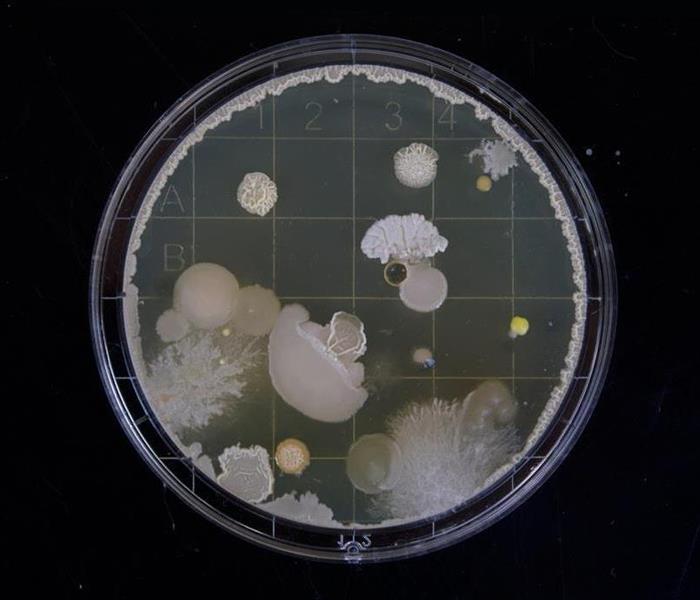How Quickly Does Mold Grow?
10/29/2019 (Permalink)
 We can't see the process that takes place in the mold life cycle until its already begun doing damage.
We can't see the process that takes place in the mold life cycle until its already begun doing damage.
Molds develop as quickly as 24 to 48 hours but can remain hidden until the spores are large enough to have done considerable damage. Even worse, dead mold spores can continue to be just as harmful to our health as live mold spores. The life cycle of mold takes four main steps. While there are complicated words and processes that occur, here is the life cycle of mold in the simplest form:
- Spore
Once an environment has created ideal conditions for mold growth, spores begin to germinate. Then they break off and travel through either air or water.
- Germ
Spores can stay dormant until in the ideal environment. In such conditions, they begin to swell, growing to a much bigger size.
- Hypha
The swollen spore consumes enzymes of the organic material it grows off, breaking down the nutrients to grow even bigger.
- Mature Mycelium
Once large enough, the structure the mold grew on becomes weak, being consumed by the now fully grown mold. Reproduction of spores now occurs.
The process of mold growth is something out of a biology class, not easy to remember and rarely useful, even if we find mold in our own homes. In the case of finding mold in your home, the best thing to do is to call a mold remediation specialist to contain, control, and remove the mold and its source of growth. Contact your local SERVPRO of East Dayton today to see how they can help you avoid further growth and damage to your home.



 24/7 Emergency Service
24/7 Emergency Service